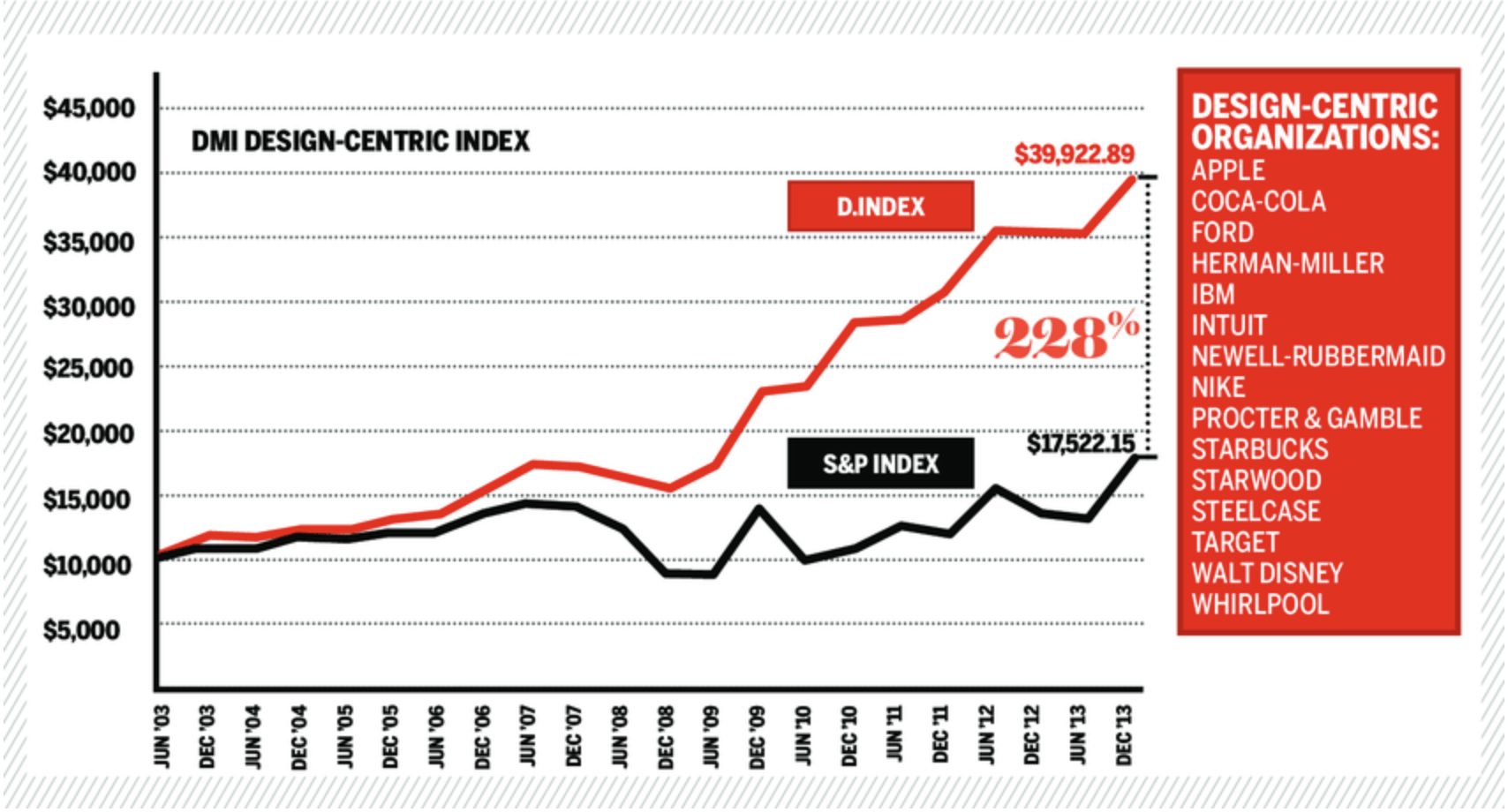All About Design Thinking

Introduction
Design Thinking developed from an investigation of theory and practice in various fields and sciences to solve our age’s human, technological, and strategic innovation demands. A designer’s job entails much more than designing creative logos or aesthetics for a company. It has made much noise all over the internet in recent years. Design thinking is a human-centered technique to creative problem-solving centered around the user.
People who are not designers use creative techniques to address a wide range of challenges. Asking the correct questions and then taking action are the first steps in the process. It is all about approaching things differently, with a new perspective.
Seem a little too overwhelming? Do not worry; we have split the guide down into easy-to-understand sections. Read on to find out all about design thinking.
This blog post contains the following information:
What is Design Thinking?
Why Is Design Thinking Important?
- Tackling Ambiguous Problems
- More Innovations
- Saves Cost
Phases of Design Thinking
- Empathize
- Define
- Ideate
- Prototype
- Test
Design Thinking VS Design Sprint and Agile
- Design Sprint
- Agile
Conclusion
What Is Design Thinking?
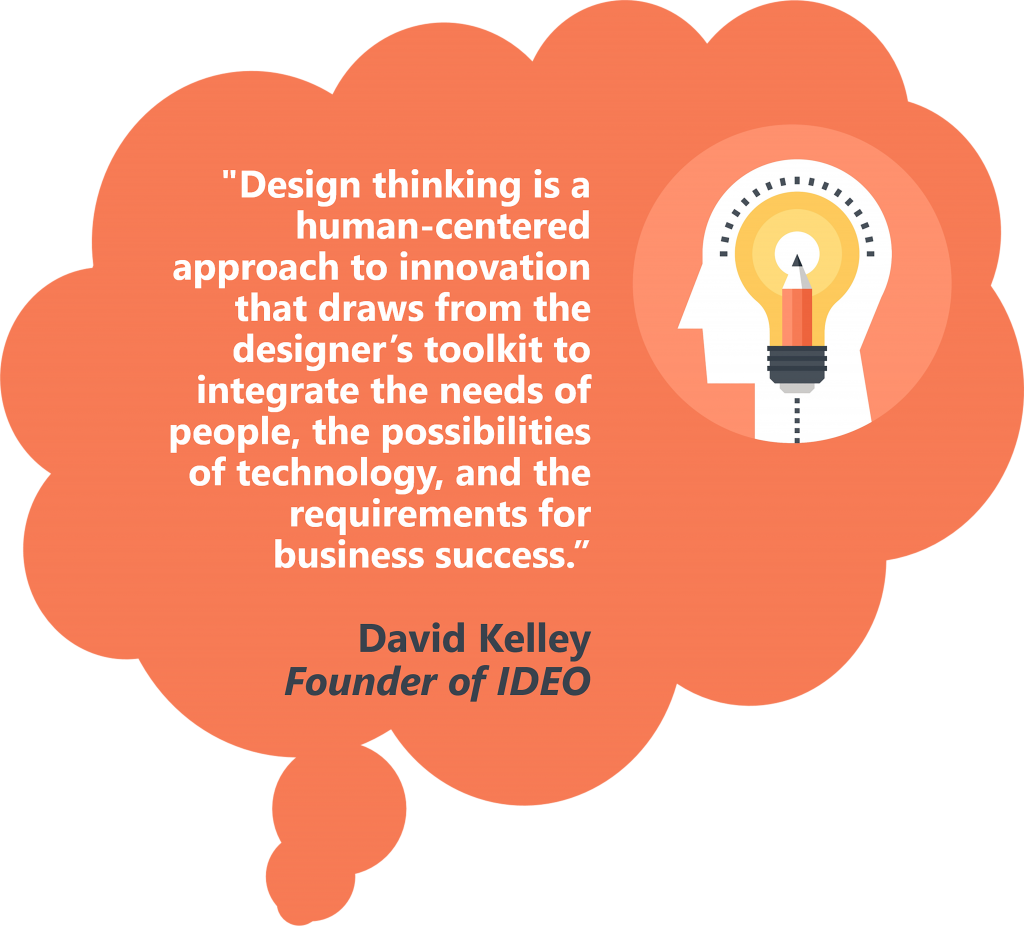
Finding it too complicated? Let me simplify do it for you. Design Thinking is an iterative process. It aims to understand the user challenge assumptions. It then reframes challenges to uncover alternate tactics and approaches. They may not be immediately apparent based on our initial level of understanding. Design thinking focuses on the needs of the user. It prioritizes humans, attempting to comprehend people’s needs. Moreover, devise practical solutions to suit those demands.
Design thinking is also a theory, a culture, and a philosophy. It also acknowledges that design should achieve the purpose and commercial goals, not only beauty. It is what we call a problem-solving strategy centered on solutions. It mixes desirability from the customer’s perspective and whatever is technologically feasible and economically viable.
In design thinking, technical feasibility is crucial. When considering solutions, be sure that what you plan can accommodate your current products and processes. The designer should evaluate the economic feasibility of the project. An excellent solution for the user but prohibitively expensive for your company may not be the best option.
One significant advantage of design thinking is introducing technical and business limitations into your work. Aside from considering what the end-user requires, it pushes you to do your best with what you have in budget and technology. It reduces lofty ideas. It forces individuals to focus on feasible and accessible solutions.
Why Is Design Thinking Important?
The world’s most creative businesses that develop more effectively use design as an integrative resource.
In their article ‘Design Thinking: Get a Quick Overview of the History’, the authors Rikke Friis Dam and Teo Yu Siang give a historical perspective and talk about the following Design Thinking features.
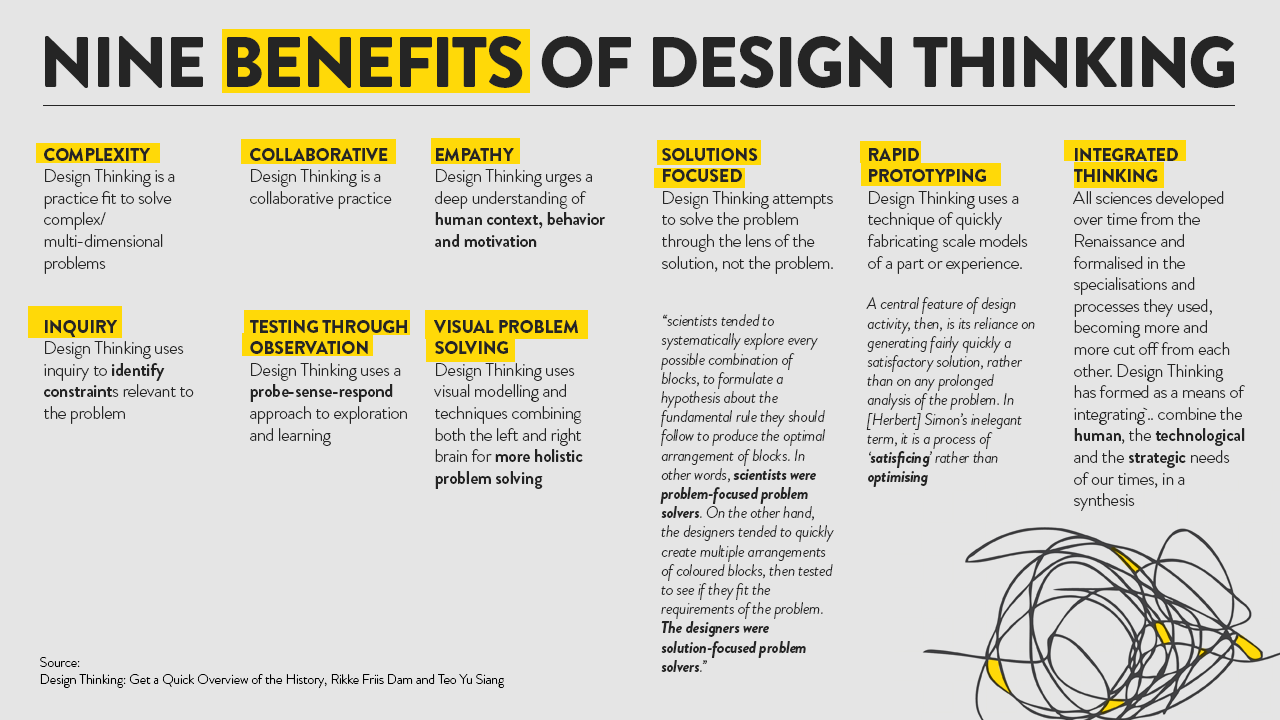
Following the Design Thinking method alone will not result in high-quality content. Understanding and responding to quick changes in users’ surroundings and behaviors is critical in user experience (UX) design. It allows teams to conduct better UX research, prototyping, and usability testing, to discover innovative methods to address people’s demands.
- 82% of companies believe there is a strong connection between creativity and business
- 78% of design-led companies have defined a process for coming up with new digital customer experience ideas.
- 71% of organizations that practice design thinking report it has improved their working culture on a team level.
- 71% of companies report creating ten times the number of assets today than a few years ago.
Image: Design Thinking Organizations
2019 Design Thinking Field Survey: The Vision Gap
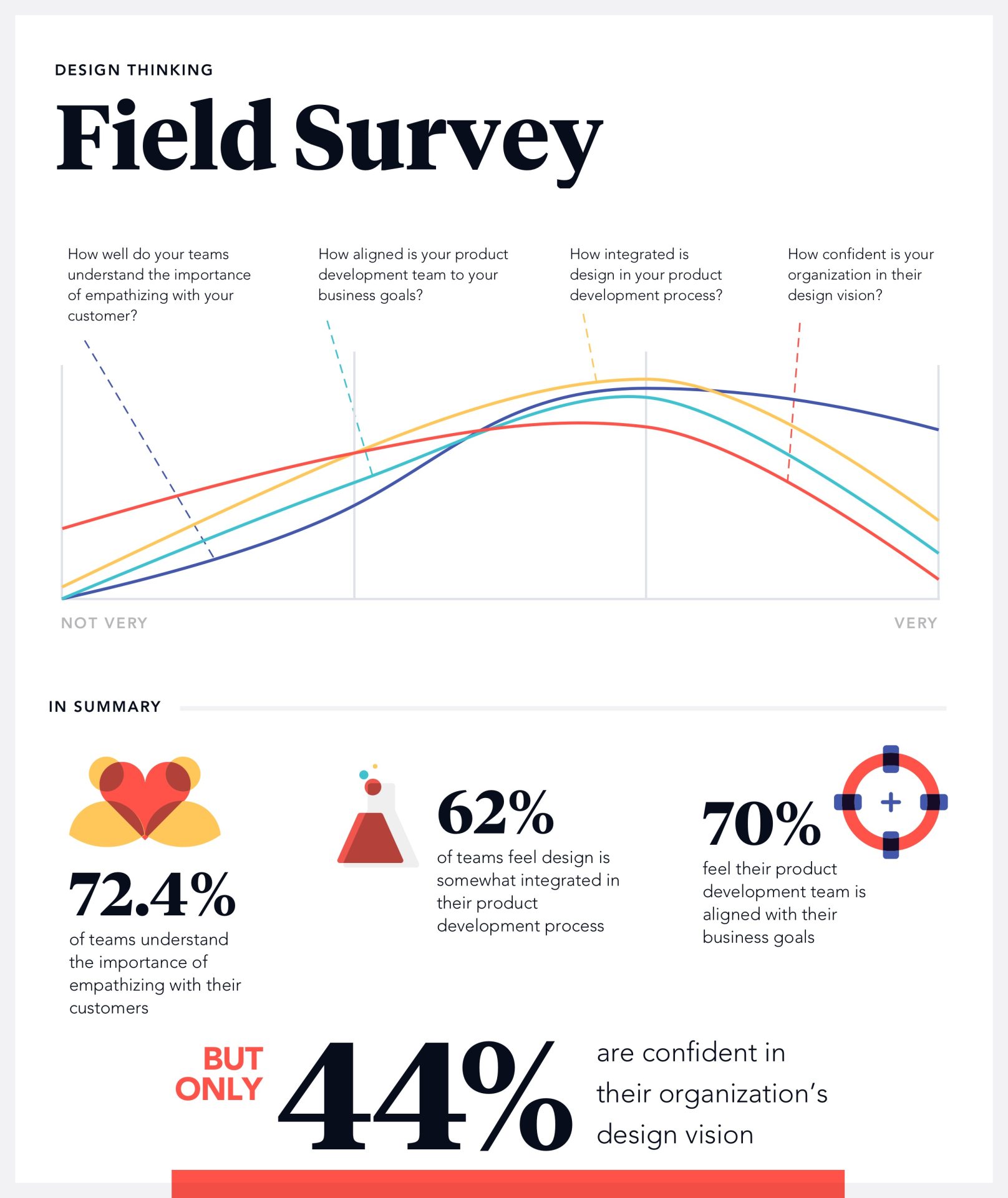
Source: Design Thinking Survey
Tackling Ambiguous Problems
Consumers usually do not know what problems need solutions or cannot articulate them. However, with careful observation, one may discover difficulties based on what they see from actual customer behavior rather than working off of their preconceived notions about the consumer. This assists in identifying unclear problems, making it simpler to innovative solutions.
More Innovations
Humans are unable to imagine impossible things. Hence, they cannot request things that do not yet exist. An iterative approach to solving those challenges usually results in unapparent, innovative solutions.
Saves Cost
Effectively bringing products to the market reduces costs and increases ROI. It protects teams from making expensive mistakes. Those waste time and money and lead to less appealing results.
Phases Of Design Thinking
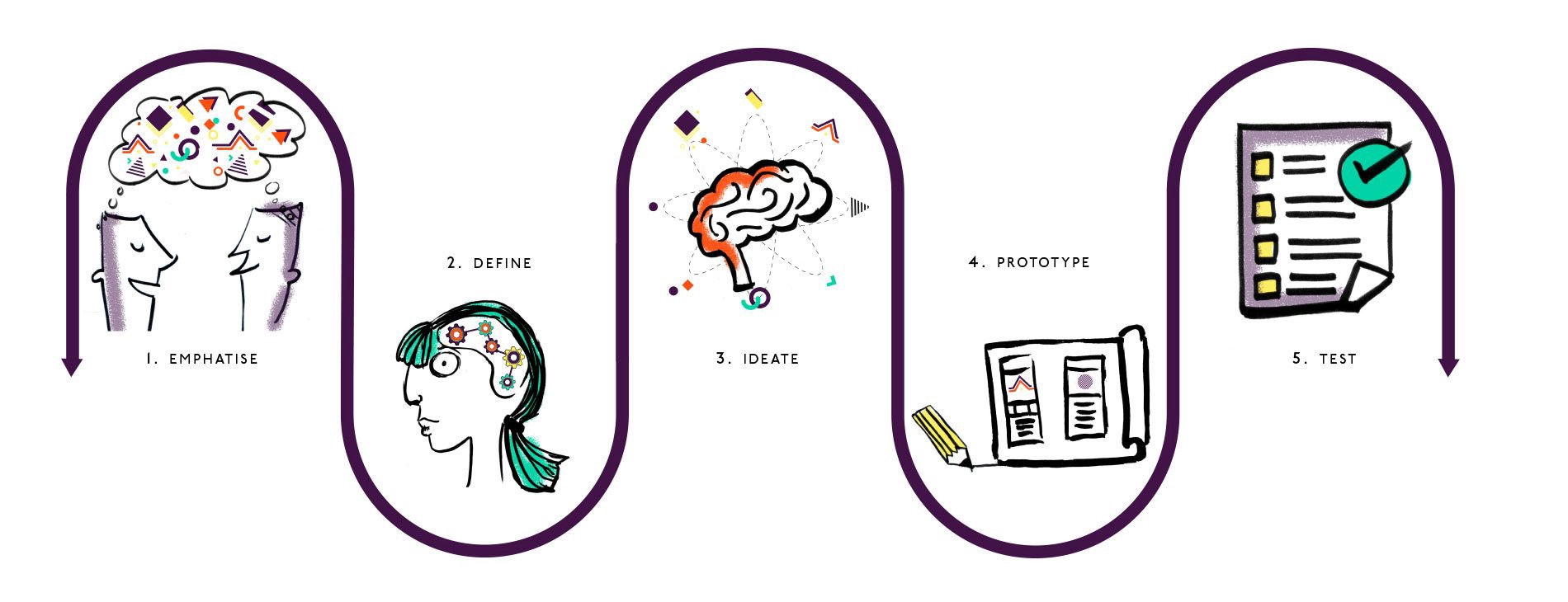
Image: Phases of Design Thinking
1. Empathize
The first step of the process is getting to know the user and learning about their wants, needs, and expectations. In this phase, a designer observes and interacts to und
erstand the emotions and psychology of the user. During this phase, the designer attempts to set aside their assumptions to get genuine insights into the user. You will conduct surveys, interviews, and observation sessions to develop user empathy.
Steps taken during this phase are:
- Inquiring with subject matter experts about their insights
- Engaging personally with an issue for a better understanding of a user’s perspective
- Having in-depth discussions about the subject with other designers
The empathy stage is an essential step in the design thinking process. It allows uncovering the motivations and experiences of an audience. It will interact with a designer’s product. It is nearly impossible to solve a user problem without the empathy stage truly.
2. Define
In the second phase, you organize, analyze, observe and emphasize the user’s fundamental issues. The problem must be specific and relevant, and the goals must be practical.
Your problem statement outlines the specific challenge you will address. It will guide you through the rest of the design process. It gives you a clear goal to work toward and prompts you to keep the user in mind. A good problem statement is human-centered. It is broad enough to allow creativity while also specific to provide direction and guidance.
Steps taken during this phase are:
- keeping the design challenge broad enough, the team has enough creative freedom.
- Creating collages of observations, grouped insights, stories
- Drafting a Point of View statement
3. Ideate
The ability to invent is essential during the ideation stage. Thinking outside the box is the game’s name at this stage, as designers are usually unconcerned about budget or expandability. Designers should have a good grasp of their user base at this stage, so it is a great time to get creative and not get too caught up in limits. Brainstorming sessions encourage free-thinking and broaden the problem space. It is vital to start the Ideation phase with as many ideas or problem solutions as feasible.
Another practice is “worst possible idea,” which is an example of a common approach in the brainstorming process. This technique helps establish trust and confidence among the design team by reversing the search for a solution into a brainstorming of what would not work. Since there is no such thing as a wrong concept in this process, designers develop good skills of confidently presenting their ideas.
4. Prototype
Prototype brings us one step closer to that one point of intersection of desirability, feasibility, and viability. Designers would struggle to solve the problem if they did not test newfound ideas. A prototype of an idea is necessary at this stage, but the results are still flexible.
Prototyping often includes the development of small-scale, cheap versions of the product. These can involve certain features to target specific problem-solving scenarios. Then create the stage for decision-making discussions about what works and what does not.
The prototype stage aims to understand any consequences or obstacles associated with bringing the product to life. Prototyping also discovers other user experience problems. It provides designers with a clearer picture of users’ behaviors, responses, and expectations.
5. Test
The testing step is the simplest of the five — we put the prototype in front of actual users. Let them try it, and collect their feedback. Following the testing step, you will know which aspects of your product people appreciate and which they would prefer to ignore. Testing provides teams with a solid base and information for revision and areas of improvement. However, it eventually indicates how feasible the idea is and allows teams to save time and money.
It is not unusual for the testing phase to “restart” the other design thinking stages, such as ideation or testing. Emerging ideas may generate other possible solutions that demand a whole new approach.
Design Thinking VS Design Sprint and Agile
Design Sprint
The Design Sprint combines design thinking concepts into a procedure that works rationally. At the same time, Design thinking is a state of mind. It is a thinking style about problem-solving implemented differently for each new project. Both are legitimate and helpful in their way. It requires a lot of information, skill, and awareness of using various tools. Particular projects must follow this defined method.
A Design Sprint is a quick look into the future to observe how people respond before investing all your time and money into producing your new product, service, marketing campaign. However, the Design Sprint is about more than just efficiency. It is also an excellent method to replace outdated office defaults with a better, more considerate, and more successful approach that brings out the most acceptable contributions from everyone on the team and allows you to concentrate your time on work that truly matters.
Agile
After clients have confirmed your product idea and business plan, it is time to add some structure to the process. In particular, Scrum helps eliminate the uncertainty associated with the conventional “waterfall” method. They determine all requirements before designing and testing a product.
Agile approaches vary, but Scrum, Lean, Kanban, and XP are the most prevalent. Whatever technique you use, the goal is to construct or execute anything interactively and iteratively. It is up to the product team to select how to plan and finish the job in their backlog effectively.
Whereas, Agile is a more organized method of working on projects. It is a workflow process that teams may use to communicate better. Also, schedule meetings, execute changes and decide on priorities. The Design Sprint is a formula for a one-time straightforward procedure. Design sprint does not contradict how people operate.
Conclusion
Design Thinking is essentially a design-specific problem-solving strategy. It includes examining the known elements of a problem and discovering the most ambiguous or peripheral factors that contribute to the conditions of a problem. A scientific method tests the actual and known characteristics to obtain a solution. Design Thinking is an iterative process. It helps to reframe an issue to discover alternative approaches and answers that may not be immediately obvious with our initial level of understanding.
If you are keen to start incorporating design thinking into your work right away, Mpire Solutions has both professional expertise and proven deliveries. Connect with us for a FREE Consultation.



